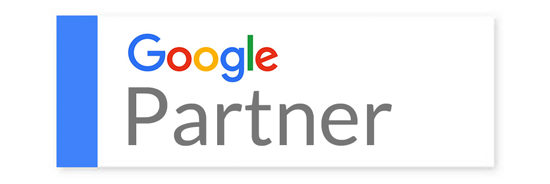What would your business be like with 84% increase in search engine traffic? Needless to say, more visitors to your website lead to more conversions and more REVENUE.
Take a look at these numbers.
6 of 11 Keywords on Page 1 of Google
Organic Traffic Up by over 84%
New Increased Sessions up by 79%
Want to replicate the same?
Remember: People can’t buy what they can’t see. At the end of the day, what really matters is sales. And you can’t sell when you are buried under your competitors. So how do you drive traffic to your website when SEO is becoming increasingly harder and search results becoming diverse and overcrowded?
Well, this case study does exactly the same. I am going to walk you through how we redefined a client’s SEO strategy and share key takeaways that you can incorporate into your own strategy.
THE PROBLEM
A client approached us around 1 and a half years ago, asking for help with their SEO. As a B2B player with a focus on document management systems, the company was managing only a few sales in a year. Despite the high quality of their product and an established brand name in the industry, they were struggling to bring in organic traffic for their main keywords.
When the SEO campaign started, the client had one primary goal – to rank for a specific set of keywords and increase organic traffic across their site.
Challenge Accepted!
THE START OF OUR SEO JOURNEY
Finding Awesome Keywords
To rank well on Google, we needed the best set of keywords. The client brainstormed excellent keyword ideas for what they wanted to rank for. Working together with the client’s marketing team; we immediately tossed the ideas into Google Keyword Planner.
It did not take time for us to identify keywords with the highest search volume. We ended up with around 20 keywords and cut the list down to 11. And voila, we had a gem of the keywords that could bring in highly qualified organic traffic.

With a strong commercial intent behind these keywords, it did not take us long to identify that the search engine results were filled with tons of ads.
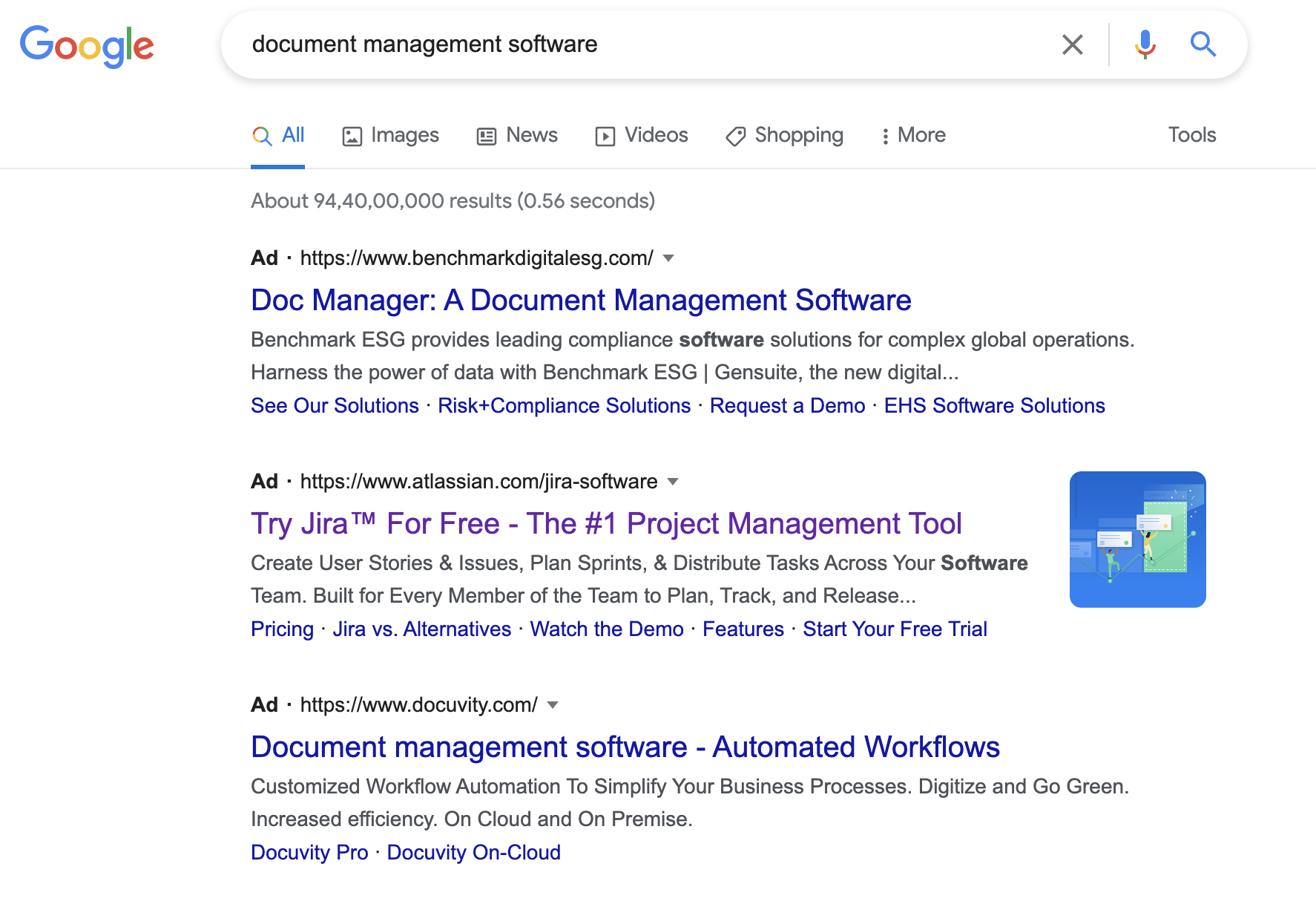
So if we ranked for these keywords, we meant serious business.
Competition Analysis
As the client was not getting significant organic traffic despite their brand name, it was critical to analyze where the competitors were ahead in their SEO game plan.
In general, we look for:
• Domain Authority: This involves comparing client’s domain authority to other ranking websites
• Big Brands: Signs of big brands like Wikipedia, Amazon and industry leaders dominating the search results indicate how competitive the niche is.
• Low Competition Pages: While pages from Wikipedia are hard to compete with, links from article directories and Web 2.0 don’t pose a similar threat. PDFs are not user-friendly and hence, easy to outrank.
• Poor Quality Pages: This step involves looking for web pages with poor content that are being ranked in the search results. Finding these kinds of pages gives us the confidence that we could create something better that users would prefer.
• Link Quality: As backlinks are the backbone of any SEO strategy, we take a comprehensive approach to examine the link quality of the competitors. This allows us to have an idea of what quality is acceptable for the keyword.
Knowing the number of root domains linking to a competitor websites gives a fair idea of how many backlinks are needed to achieve similar results.
In this case, the competitor Open KM Knowledge Management had around 2700 domains pointing towards itself. So we knew exactly what to expect in the link building process.

Moreover, tools like SEMRush, Majestic & Ahrefs are essential in determining which keywords your competitors rank for. From there on, reverse-engineering as to why competition is ranking for a particular term and implementing the same in our SEO strategy is the key to rank for those terms.
We did the same for Open KM and found out “open source document management” to be one the most popular terms used by searchers. And yes, you guessed it right! We targeted this keyword as well.
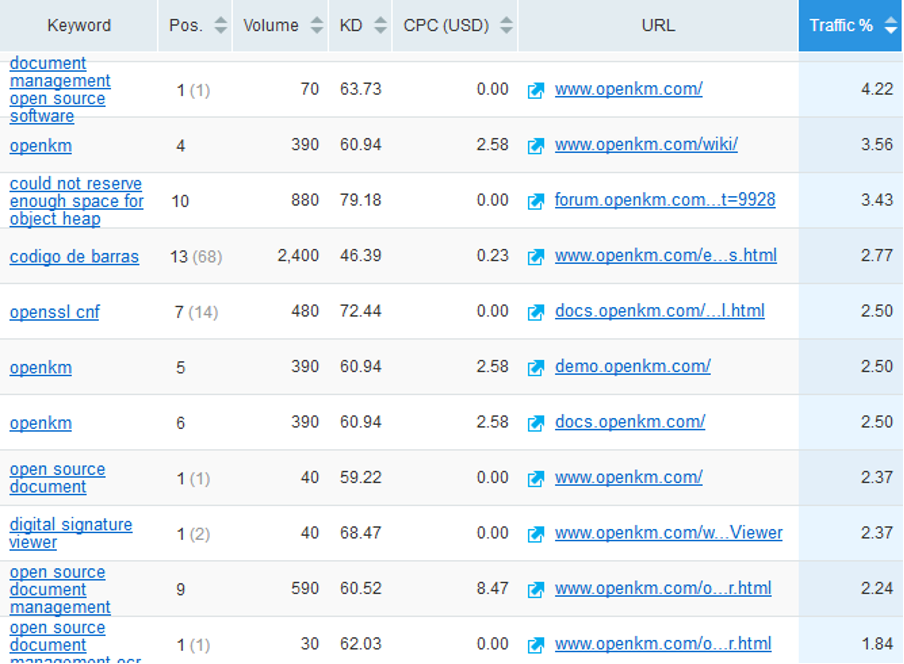
SEO Audits & Page Optimization
Now that we’d analyzed what our competitors were doing, it was important to have an understanding of website’s current standing.
Contrary to a popular belief, SEO audit is not just useful for a new website, it is equally important for those websites that never had comprehensive SEO strategy in place.
Our SEO audit typically covers content related issues, site architecture, indexing, backlink analysis and, competitive audits. The purpose of SEO audit is to identify improvement areas or technical issues that may have been causing damage to your website’s online presence.
Some common technical issues that hurt a website are:
- High Page Loading Time
- Non-mobile friendliness
- Broken Links
- Duplicate and Thin Content
- Poor navigation
- No interlinking
- Improper use of heading tags
After performing the SEO audit, we were happy to find our client did not face any major issue.
Key Takeaways from SEO Audit:
- The content was well written. However, the keyword density was low, which we had to increase anyway as per our keyword research.
- Heading tags were properly used. In fact, headings had to be optimized with target keywords. So not a major concern for us.
- The navigation was great. The client placed the menu horizontally at the top of website with consistent placements. Pages that did not add much value were placed in the footer menu.
Secondary navigation in the form of breadcrumbs was actively used, adding context to the innermost pages and reflecting the structure of the website.
- The SSL certificate was in place.
- The site had a clean and modern design.
- Only a few broken links were found on the website.
The only 2 issues we identified that needed our attention were: Page loading speed and internal linking practices.


Looking after the scores on Google PageSpeed Tool, we had something to worry about. Our client’s website scored a devasting 37/100 on mobile devices and not so good 57 on the desktop.
Comparing the page load of time of 8.6 seconds to optimal time of 3 seconds, we needed to make major changes in the code. Thanks to Google’s official PageSpeed Tools, we clearly knew where to look for.
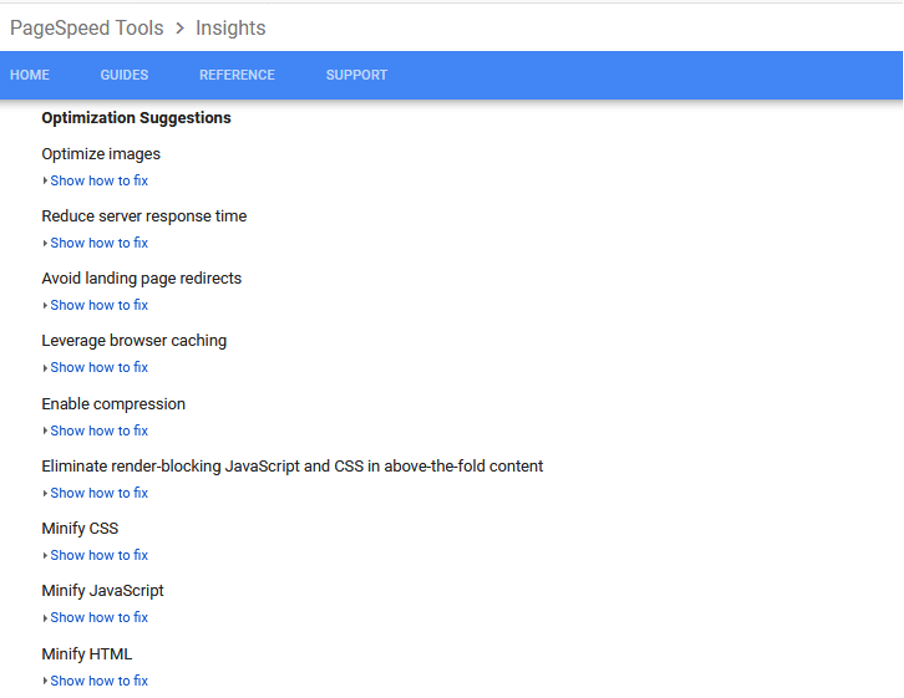
After making the suggested changes, we were able to score 96 on mobile and 76 on the desktop. While it may not be great, it’s definitely not terrible like it was earlier.
And have a look at the page loading time. It improved drastically.

Now, it was time to address the second problem.
The main issues pertaining to interlinking were:
- The client was not using keyword rich anchor texts
- They were linking to wrong pages.
We knew by fixing these issues, we could flow page authority back to the homepage. And that’s exactly what we did. We used the right anchor texts to target right pages.
Simple as a piece of cake!
Coming over to optimizations at the page level, we decided it would be most effective to target most of the keywords to the homepage. As all the shortlisted keywords were closely related to each other, it made sense and wasn’t a problem.
Following the SEO basics, we made some simple changes to the homepage:
- We added the keywords and their variations in Title and Meta Description.
- Our major focus was on 3 keywords that were backed by huge search volume.
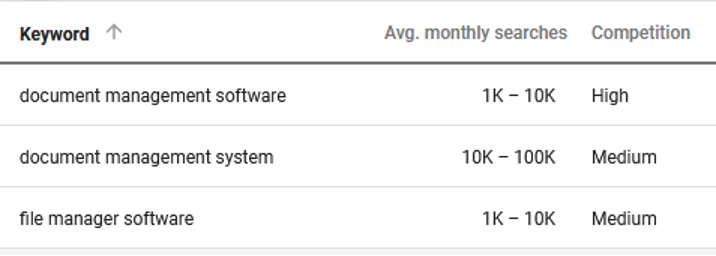
So we added our champion keywords to the H1 tags and others carefully in the H2 & H3 tags. As the homepage was targeted around the theme of “document management”, we did not go beyond H3 tag.
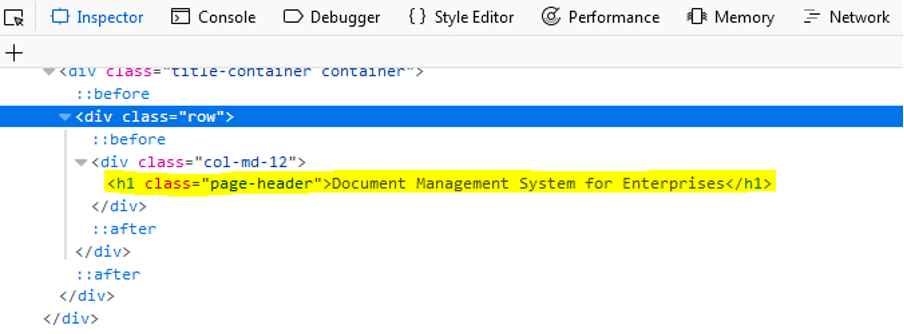
- We sprinkled our champion keywords a few more times in the content.
Link Building
Since we were trying to rank higher for a set of keywords, we had to play by the search engine’s rules. And the rule is “More quality backlinks, higher the rankings.”
While writing unique and user-friendly content is one thing, you cannot sit back and relax. Unless you specifically try to build links, it will be hard for you to rank well on search engines. After all, links are still one of the top 3 ranking factors used by major search engines like Google.
From the very start, we focused on acquiring links from:
- Blogger Outreach
- Business Citations
- Unlinked Mentions
Before we started, the client had 845 domains pointing towards it. Given the strong presence of the client’s brand in the industry, we easily scored many backlinks from new domains taking the total tally to 1178.

THE RESULTS
Here is the Google Analytics data over the period of 12 months. When we started, the client was getting 3464 visitors every month. After a year of work, we increased their organic traffic to 6397 per month and the number is still growing. A whopping 84% increase in organic traffic!
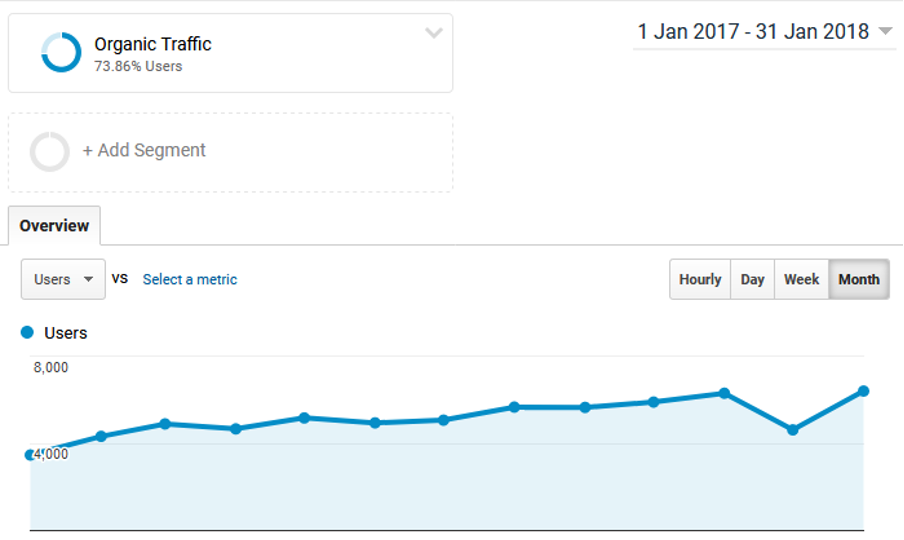
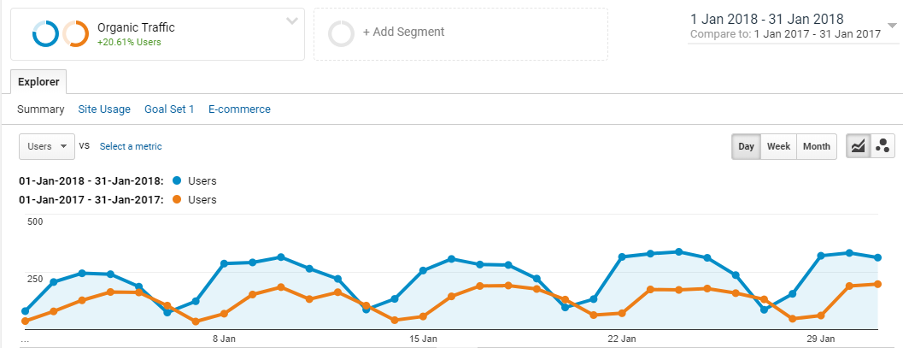
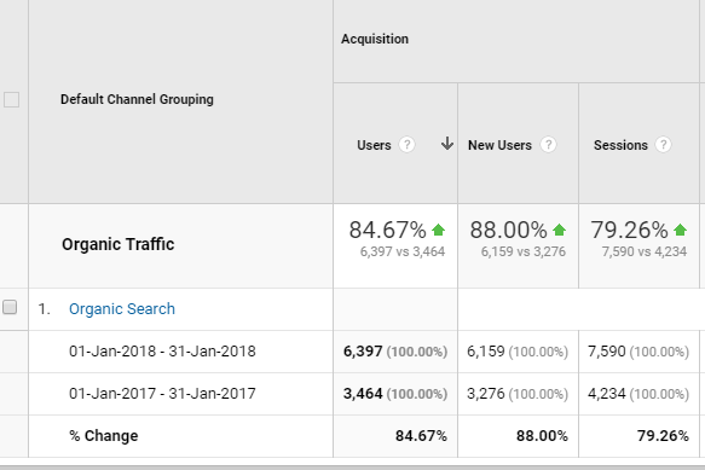
The keyword ranking improved substantially. While no keyword ranked on top 2 pages in January 2017, the client has now 8 keywords on top 2 pages. Out of those 8 keywords, 6 rank on Page 1.
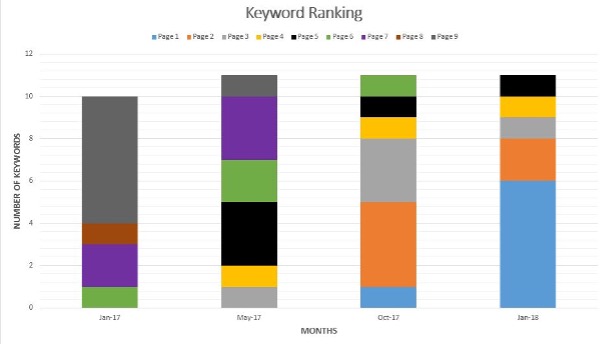
THE CONCLUSION
From the case study, it is evident you can’t expect results overnight. SEO is a long-term commitment and if you quit early, you’ll never see the fruits of your hard work.
Our SEO agency has achieved tremendous growth for some clients within 3-4 months, but it rare. For most SEO campaigns, the real results usually take at least 8-12 months of time.
It is not this easy to grow organic traffic. In this case, the client had a strong brand name which made us easy to lay the SEO foundation. Sometimes, clients have years of spammy backlinks that they need to get rid of. In extreme cases, the websites had been penalized and the agency needs to remove the penalties and start from the ground once again.
If you have any questions related to this case study, feel free to Contact Us. We’ll be more than happy to assist you.

